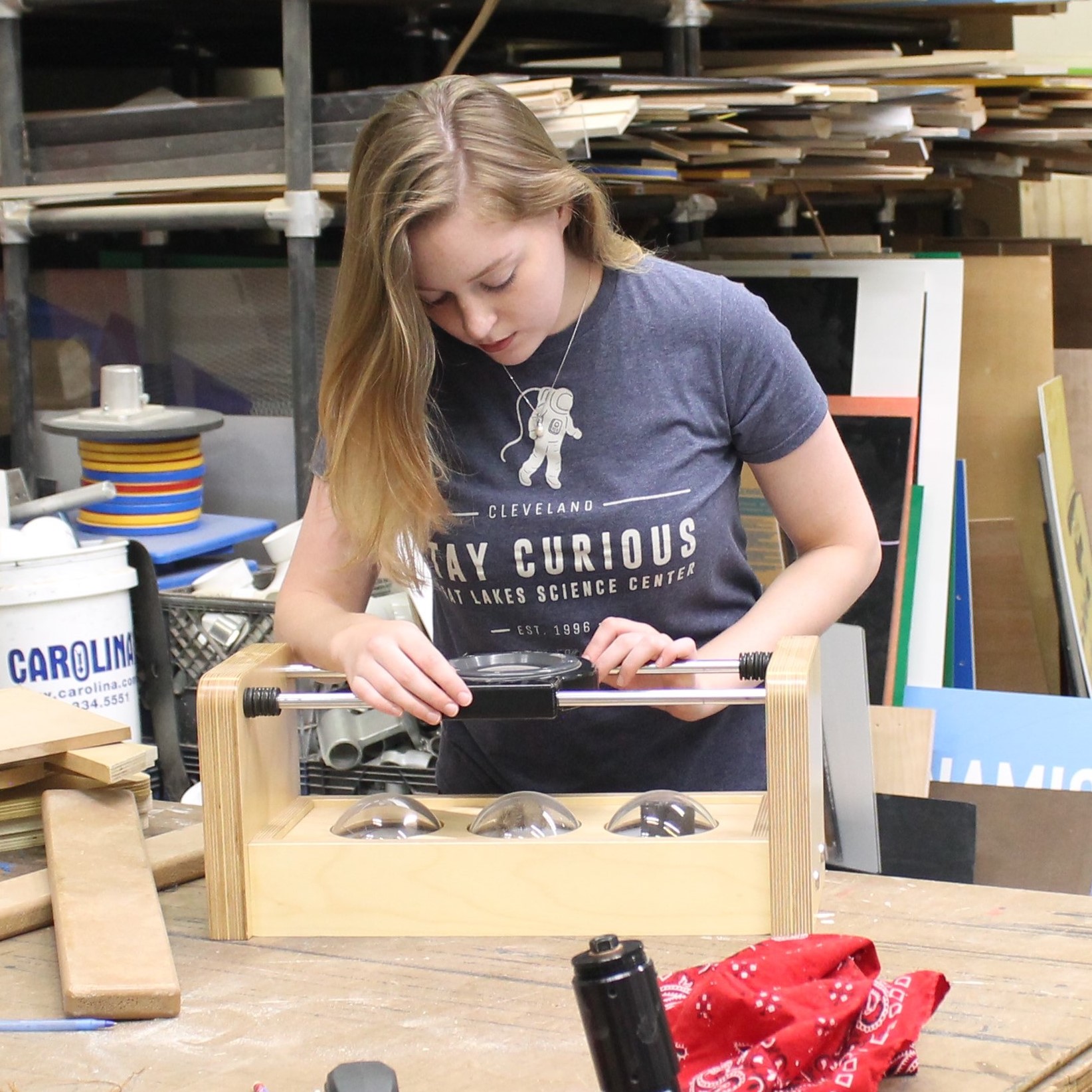
Claire Dorsett
She/Her
Great Lakes Science Center
Dialogue & Deliberation Fellowship
Claire Dorsett is the Associate Director of Strategic Content at Great Lakes Science Center. She has drawn upon narrative storytelling techniques to develop three 7,000-square-foot original special exhibitions on topics ranging from adhesives to automobiles.
Community Partner
MidTown Cleveland, Inc., is a community development corporation serving both a residential and commercial population. Their work is centered on urban planning, community development, and economic development. They have a staff of 11, serving approximately 7,000 residents, 450 businesses, and 80 nonprofits.
Project Description
Using a community-focused, participatory approach to choosing a discussion topic, Great Lakes Science Center and MidTown Cleveland convened an in-person discussion on nutritional literacy in the Cleveland community.
This session was broken into two halves, with the first focusing on dialogue and the second on deliberation. During the dialogue, participants were asked to share a personal story or memory about food and nutrition, with a few minutes provided to write or draw in response to that prompt before sharing out in small groups. Then the conversation shifted focus to the future, and participants were asked about their hopes and dreams for their communities around food and nutrition.
Responses to these prompts provided a springboard to discuss obstacles around reaching that ideal future, transitioning participants into the deliberation portion of activities. The group deliberated on the “who” and “how” of change, including which stakeholders are well-positioned to help the community achieve the future they’ve envisioned and how Great Lakes Science Center and MidTown Cleveland can work with the community toward that goal.
The final outcomes of the event will include an actionable list of recommendations that can be used as a resource for local residents, businesses, and others.The forum was held asynchronously online and was flexible so that participants could focus on multiple issues.
They also offered a mail-in postcard to reach individuals without reliable internet access. The project team ran into issues with low participation but were able to improve recruitment through a combination of incentives, synchronous engagement opportunities, online advertising, and community partners’ outreach, eventually reaching 39 participants.
The forum brought up many different ideas for how cultural institutions could support environmental justice, such as providing meeting space for environmental justice organizations, developing interactive exhibits, and developing online tools to help community members access environmental data. The data gathered was shared with participants and the cultural institutions and environmental justice groups that helped to design the forum.